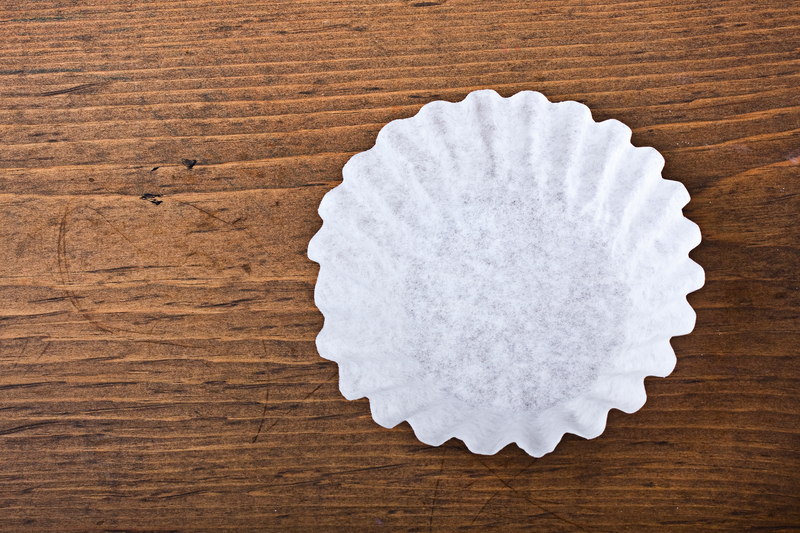Effective Ways to Clean Mould from Your Window Sills
Posted on 09/06/2025
Effective Ways to Clean Mould from Your Window Sills
Mould on window sills is not just unsightly; it can also present health risks and indicate problems with moisture in your home. If you notice black, green, or brown mould patches appearing around your windows, it's important to address the issue promptly and effectively. This comprehensive guide will walk you through the most effective ways to clean mould from your window sills, prevent its return, and protect your indoor environment.
Why Does Mould Grow on Window Sills?
Mould spores are everywhere, but they only thrive in certain conditions. Window sills are especially prone to mould growth because:
- Condensation often builds up on windows, especially in colder months.
- Poor ventilation prevents moisture from evaporating.
- Organic materials, such as wooden frames or dust, provide food sources for mould.
Understanding the root causes helps you take more effective action against mould on window sills.

How to Identify Types of Mould on Window Sills
There are several common types of mould that may appear on or near your windows:
- Black mould (Stachybotrys): Usually appears in slimy black or dark patches.
- Green mould: Forms fuzzy green areas and can spread quickly.
- White or yellow mould: These types are powdery and may indicate the early stages of growth.
All types of mould can be cleaned with similar methods, but persistent or widespread growth may require professional attention.
Health Risks Associated with Mould on Window Sills
Exposure to even small amounts of mould can impact your health, especially if you are sensitive, asthmatic, or have respiratory issues. Common symptoms include:
- Sneezing, coughing, and irritated eyes
- Worsening asthma or allergy symptoms
- Headaches and fatigue
Children, the elderly, and those with suppressed immune systems should avoid exposure and ensure mould is cleaned thoroughly and safely.
Preparation: What You Need Before Cleaning Mould from Window Sills
- Protective gloves and mask
- Goggles (to avoid spore exposure to eyes)
- Microfiber cloths or paper towels
- Spray bottle
- Brush with stiff bristles (for stubborn areas)
- Cleaning solution (more on this below)
- Bin bags for disposal
Always wear gloves and a mask to protect yourself from airborne spores when cleaning mould from a window sill.
Best Solutions for Cleaning Mould from Window Sills
There are several effective solutions for cleaning mould from window sills. You can choose from eco-friendly household solutions or specialised chemical cleaners, depending on the severity of the infestation:
Natural Cleaning Solutions
- White Vinegar: Vinegar is highly acidic and can kill up to 82% of mould species. Pour undiluted white vinegar into a spray bottle, spray the affected area, let it sit for at least 1 hour, then scrub and wipe.
- Baking Soda: Excellent for mild cases. Mix one teaspoon of baking soda with two cups of water in a spray bottle, shake well, spray generously on mould spots, scrub, and wipe.
- Hydrogen Peroxide (3% solution): Hydrogen peroxide is a strong anti-fungal that also disinfects. Spray directly on the area and allow it to bubble for 10 minutes before wiping.
- Lemon Juice: The acidity and natural antibacterial properties of lemon juice make it a good option for light infestations. Use undiluted lemon juice in a spray bottle, apply to mould, and wipe after 10 minutes.
Chemical Cleaning Solutions
- Mould and Mildew Remover Sprays: Commercial mould removers (such as HG Mould Spray or Dettol Mould & Mildew Remover) are designed to quickly and efficiently kill mould. Follow the instructions carefully and ventilate the room well.
- Bleach Solution: Mix one part bleach with three parts water. Apply with a spray bottle, leave for 10-15 minutes, scrub, and wipe clean. Note: Bleach can damage certain window sill materials and create strong fumes; only use in well-ventilated areas and never mix with vinegar or ammonia.
Specialist Mould Cleaning Products
- Anti-mould paints and sealants (ideal for prevention after cleaning)
- Enzyme-based sprays (for persistent or large areas)
Step-by-Step Guide: Cleaning Mould from Window Sills
- Open windows for ventilation. This helps reduce exposure to mould spores and clears away fumes from any cleaner used.
- Put on protective gear. Always wear gloves, a mask, and goggles to avoid irritation.
- Remove excess moisture and debris. If the mould is wet or slimy, blot up moisture with disposable towels. Dispose of them immediately.
- Spray your chosen cleaning solution generously. Allow it to soak the affected area for at least 10-60 minutes, depending on the solution.
- Scrub with a brush or cloth. For stubborn mould, use a stiff-bristled brush. For lighter growth, a microfiber cloth will suffice.
- Wipe clean with a dry cloth. Repeat the process if needed.
- Dispose of contaminated materials safely. Double-bag used cloths, towels, or brushes, and dispose of them in your outdoor rubbish bin.
- Dry the window sill thoroughly. Use a fan or dry cloth to absorb any remaining moisture, ensuring mould does not immediately return.
Special Tips for Cleaning Different Window Sill Materials
- Wooden window sills: Avoid soaking with too much liquid. Wipe with a damp--not dripping wet--cloth, and dry immediately. Consider sanding and refinishing badly damaged areas after cleaning.
- UPVC or plastic sills: These are easier to wipe clean, and most commercial mould removers are safe for them.
- Painted window sills: Test your cleaning solution in an inconspicuous area first to make sure it doesn't damage the paint or finish.
How to Prevent Mould from Returning on Your Window Sills
1. Improve Indoor Ventilation
Open windows regularly, use extractor fans in kitchens and bathrooms, and invest in a dehumidifier if necessary. Proper airflow is your first line of defense against mould.
2. Reduce Condensation
- Keep blinds and curtains open during the day to allow air circulation.
- Wipe condensation from windows and sills every morning, especially in winter.
- Install double glazing or use insulating film on windows if feasible.
3. Clean Regularly
Make mould prevention a part of your window cleaning routine by wiping sills weekly with a vinegar or baking soda solution.
4. Repair Leaks Promptly
Check for leaks around window frames or sills, and seal any gaps or cracks before they allow excess moisture to penetrate and encourage mould growth.
5. Treat with Anti-Mould Products
After cleaning, apply anti-mould sprays or use a mould-resistant paint on window sills to provide long-term protection.
When to Seek Professional Help for Mould Removal
Some cases of mould require professional intervention, particularly if:
- You have a black mould infestation larger than one square metre.
- Mould keeps returning despite repeated cleaning.
- There's a persistent musty smell or visible water damage.
- Household members show ongoing health symptoms that may be related to mould exposure.
Professional remediation ensures thorough removal and addresses underlying sources of mould, such as leaks or damp walls.

FAQs: Cleaning Mould from Window Sills
-
Is vinegar or bleach better for cleaning mould from window sills?
Vinegar is often preferred for light to moderate mould because it is non-toxic and safe for most surfaces. Bleach is effective on non-porous surfaces but should be used with caution. -
How often should I clean my window sills to prevent mould?
Wipe down window sills weekly, especially in damp or cold months. -
Can I paint over mould on my window sill?
No! Painting over active mould traps spores and allows the problem to worsen. Remove all visible mould first, dry thoroughly, then use specialised paints for prevention.
Conclusion: Keep Your Window Sills Mould-Free
Dealing with mould on your window sills doesn't have to be an ongoing challenge. By following these effective ways to clean mould from your window sills, you can protect your home's appearance, preserve your window frames, and create a healthier indoor environment.
Remember to always clean mould safely, address underlying moisture sources, and incorporate regular maintenance to prevent mould recurrence on window sills. If you encounter persistent or widespread growth, don't hesitate to consult a mould remediation specialist. Keeping your window sills clean and mould-free will ensure your home remains healthy, beautiful, and welcoming for years to come.



